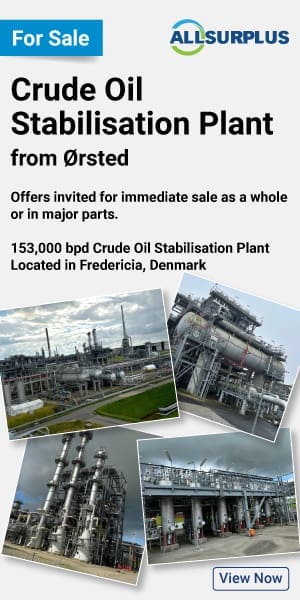Although the current domestic political regime appears to be more oil and gas-friendly than its predecessor, American oil refineries are entering a period of uncertainty. Projections for the year indicate that petroleum stocks for motor gasoline, distillate fuel oil, and jet fuel will likely fall, mirroring pricing from 25 years ago. Although refining capacity in 2024 experienced a two percent increase, it will still fall short of closing the gap between supply chain capabilities and the growing domestic demand for fuel.
With 132 active refineries, the United States reigns as the global leader in oil refining. Comprising major players such as Marathon, Valero and ExxonMobil, the country produces over 900 million metric tons of refined products annually. While the majority of contributors increased their capacity in 2024, demand is unlikely to be met.
The situation looks even more concerning when you consider that jet fuel stocks could shrink to just 21 days of supply, a low not seen since 1963. The U.S. refining sector shows minor signs of progress, but crude oil imports are expected to drop 20 percent by the end of 2025 to 1.9 million barrels daily – the lowest since 1971. This puts the industry at a crucial turning point. It must strike a balance between increased domestic production and the reality that some refineries may close as electric vehicles become more popular.
U.S. Refinery Capacity Hit Critical Limits in 2024
U.S. refinery capacity showed a slight recovery in 2024 but remains significantly below pre-pandemic levels today. The 132 active oil refineries can process 18.4 million barrels per calendar day, up from 129 refineries at the start of 2023. This slight uptick indicates some recovery after the significant capacity losses incurred during the pandemic.
That growth, however, came mainly from expanding existing facilities rather than building new ones. ExxonMobil made a big move in Beaumont, Texas, and boosted its facility’s capacity from 369,000 to 609,000 barrels per calendar day. In addition, Marathon’s Galveston Bay refinery upped its capacity by six percent to 631,000 barrels per day, making it the nation’s largest refinery ahead of Motiva’s Port Arthur facility.
Nevertheless, today’s capacity doesn’t match pre-pandemic volumes. The U.S. lost approximately 1.1 million barrels of daily refining capacity between 2020 and 2021, accounting for about one-third of global capacity losses during this period. American refiners now run at very high rates – about 95 percent of total capacity – and they’re pushing their operational limits.
Rising Demand and Limited Upgrades Pressure Refiners
U.S. refineries face significant economic barriers to expanding their capacity, even as fuel needs continue to grow. Rather than building new plants, major operators choose to upgrade their existing facilities. This approach stems from expected drops in fuel demand and lengthy regulatory processes. The last complex refinery built in the U.S. was ECOL’s Garyville, Louisiana, facility in 1976.
The jet fuel market faces harsh supply conditions. U.S. consumption will reach record levels next year. Lower refinery production will push inventories down to concerning levels. The global gasoline market tells a different story. Demand should peak this year at about 28 million barrels daily due to more people buying electric vehicles, as well as cars becoming more fuel-efficient.
Refiners must navigate unclear trade policies and economic growth considerations when making investment decisions. A refinery expansion project costs billions of dollars amid changing regulations and market conditions. Industry experts say modernizing a medium-sized refinery to process lighter crudes costs hundreds of millions of dollars and takes several years.
Recent projects show these huge investments clearly. ExxonMobil spent $2 billion to add a 250,000-barrel-per-day crude distillation unit at its Beaumont, Texas, refinery in 2023. Chevron also invested $475 million to modernize its Pasadena, Texas, refinery in 2024. This upgrade increased its light crude processing capacity by nearly 15 percent to 125,000 barrels daily.
High costs are not the only challenge. Environmental rules make building new refineries almost impossible. Environmental groups also fight against expansion plans. The planned $3.8 billion expansion of bp’s Whiting refinery in Indiana met strong resistance from these organizations.
Refineries require regular maintenance, which puts extra pressure on their capacity. These maintenance periods, called “turnarounds,” temporarily shut down facilities. Teams plan these vital operations for years, typically scheduling them for spring and fall. With fewer refineries meeting market demand, these offline periods have a greater impact on market dynamics than ever.
Enter Specialty Services
With domestic refineries burning the proverbial candle at both ends to meet growing demand, companies within the service sector are leveraging assets to tap into the maintenance and efficiency needs. While running at maximum output, systems become susceptible to wear and tear and, as a result, reliability comes into question.
With innovation historically rooted in the oil and gas industry, service companies have leveraged their expertise to ensure equipment reliability. High-velocity lube oil flushing reigns as one of the premier services utilized to combat wear and tear on rotary equipment and extend equipment life.
“High-velocity lube oil flushing is a critical maintenance process utilized to remove contaminating materials from lube oil systems and enhances the reliability of equipment, which can drastically enhance the reliability of equipment and reduce downtime that that threatens refineries’ ability to meet demand,” says Tim Sapia, operations coordinator for Louisiana-based Breaux Energy Services. “Flushing operations focus on removing harmful materials like water, rust and dirt from systems from critical systems at specific intervals dictated by manufacturer recommendations and specifications.”
According to Sapia, the refining sector is working hard to push output and meet demand. Ensuring equipment remains operational is key to making every effort to meet the growing demand. While companies close assets, they can still serve the refined product needs of the population. Specialty services, such as high-velocity lube oil flushing, offer a viable solution for ensuring success.
“Refineries are operating at maximum output and doing their very best to meet the rising growing energy needs,” says Sapia. “By increasing the runtime and avoiding costly repair costs, high velocity lube oil flushing sets refineries up to succeed and remain in operation for long time periods to fulfill their services without pause.”
Headline image generated by Writesonic/June 2025.
Nick Vaccaro is a freelance writer and photographer. In addition to providing technical writing services, he is an HSE consultant in the oil and gas industry with twelve years of experience. Vaccaro also contributes to SHALE Oil and Gas Business Magazine, American Oil and Gas Investor, Oil and Gas Investor, Energies Magazine and Louisiana Sportsman Magazine. He has a BA in photojournalism from Loyola University and resides in the New Orleans area. Vaccaro can be reached at 985-966-0957 or nav@vaccarogroupllc.com.







